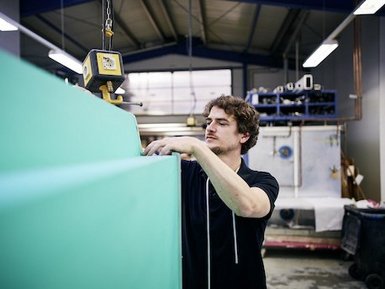Constructing advanced composite components for aircraft and engines poses tremendous precision and quality demands. As aerospace companies continually design higher-performance vehicles with greater composite content, manufacturers must keep pace through constantly evolving fabrication technologies. From boosted automation and novel curing techniques to integrated digitization and exotic composites, aerospace composite manufacturing companies like Aerodine Composites now pursue multiple roads towards more competitive, reliable and sustainable production.
Automating Production Processes
Converting raw carbon fiber, glass, or polymer ingredients into a flawless composite part remains labor-intensive. Many inspection and handling steps still rely on manual labor despite gradual improvements over decades. To accelerate aircraft assembly cadences while minimizing costs, automation represents a key focus area for aerospace composite manufacturers.
Several companies now use automated fiber placement machines to position reinforcement fabrics. Others implement automated ultrasonic scanning to screen for defects in finished pieces. Artificial intelligence also shows promise for optimizing the myriad process parameters around ovens, presses and cleanrooms. Amplifying and interconnecting such automation elements throughout fabrication means manufacturers see significant quality and lead time improvements.
Advancing Curing Methods
After stacking composite layers for a piece, manufacturers cure them into hardened form using autoclaves, ovens exploiting high pressures and temperatures. Nevertheless, conventional autoclaves impose workflow bottlenecks with limitations around batch sizes and single-use tooling. Recently emerged out-of-autoclave curing methods help overcome such barriers by employing reusable tools, infrared radiation, and modular build volumes to achieve tighter process control.
Incorporating Exotic Materials
While aviation composites heavily involve carbon and glass fibers today, introducing new types of nano-modified resins and reinforcements drives further enhancements. Nanomaterials like graphene flakes or carbon nanotubes infuse existing composites with augmented electrical and thermal conductivity for integrated temperature/damage sensing. Boron and ceramic fibers also reinforce composites even stronger at the microscale.
Additionally, bio-derived resins from plant sugars help make composites greener. As manufacturing processes mature to support such exotic composite formulations reliably, they unleash next-generation mechanical properties and functionality past conventional limits. The resultant materials innovations promise continued expansion of composites’ multifaceted aerospace benefits.
Embracing Digital Transformation
Many composite fabricators still rely on manual techniques legacy processes, creating information fragmentation across workflow steps. This leads to costly rework and inconsistencies. However, digitally interfacing all production hardware assets for data-synchronized automation facilitates predictive monitoring and feedback process refinements.
Some aerospace manufacturers now implement digital twins – virtual replicas of physical production lines. Simulating manufacturing procedures digitally allows programmers to pre-validate programming code and catches issues before real production. These digital continuity initiatives synchronize component data from raw materials to finished products using cloud analytics to trace variations.
Pursuing Sustainability
With growing environmental awareness, aerospace composite manufacturers also strategize around sustainability in their operations. Efforts include recycling excess raw materials, minimizing waste products, cutting water and energy utilization, as well as exploring bio-based or other renewably resourced composite constituents. Process innovations similarly target resource efficiency via lightweight tooling, dry-state preforming over solvent-intensive wet layups and closed-loop recycling of cured plastic wastes. Embedding sustainability considerations deeper into business models alongside technology innovation means the composites industry pursues a parallel path aligning with greener aviation aims.
Conclusion
Constructing flawless composite structures for aircraft demands stays in lockstep with soaring industry demand forecasts. With each new generation of planes relying more profoundly on composites for optimal performance, manufacturers must deliver accelerated innovation in their fabrication technologies.
Ongoing investments in production automation, high rate curing methods, exotic material formulations and digitally connected factory infrastructure collectively define the future for aerospace composite manufacturing companies. Mastering these multifaceted solution pathways will prove essential as surging volumes of composites take flight across aviation in the coming decade.


